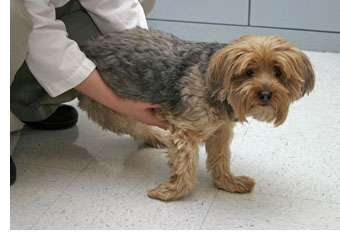 In the nervous system, the ability to move a limb can be compared to a computer system and the ability to print a document. The computer (brain), connecting cable (spinal cord) and printer (limb) must all communicate to produce the proper response. For example:
In the nervous system, the ability to move a limb can be compared to a computer system and the ability to print a document. The computer (brain), connecting cable (spinal cord) and printer (limb) must all communicate to produce the proper response. For example:
- If the computer’s network isn’t working properly, then the signal could be inhibited from reaching a normal functioning cable and printer.
- If the cable was severed, communication would not be linked between the normal functioning computer and printer.
- And, a good signal flowing from the computer and cable wouldn’t be able to help print the document if the printer rollers were unable to turn.
The following list includes some of the more common signs associated with limb paresis/paralysis and weakness and is not all-inclusive.
- knuckling
- dragging leg(s)
- abnormal gait
- monopareseis/monoplegia
- paraparesis/paraplegia
- tetraparesis/tetraplegia
The following list includes some of the more common diseases associated with limb paresis/paralysis and weakness and is not all-inclusive.
Degenerative
- lumbosacral stenosis
- intervertebral disk disease
- cervical spondylomyelopathy / wobbler syndrome
- arachnoid cyst / diverticulum
- spondylosis deformans (rarely resulting in clinical signs)
Congenital
- vertebral malformations
- atlantoaxial subluxation
- caudal occipital malformation syndrome
- syringomyelia or hydromyelia
- spina bifida
Inflammatory
- Infectious:
- Bacterial
- diskospondylitis
- tetanus
- rickettsial
- Rocky Mountain spotted fever
- ehrlichiosis
- viral
- canine distemper encephalomyelitis
- feline infectious peritonitis (FIP)
- feline leukemia virus (FeLV)-associated myelopathy
- rabies
- fungal
- aspergillosis
- blastomycosis
- cryptococcosis
- coccidioidomycosis / Valley Fever
- histoplasmosis
- protozoal
- neosporosis
- etoxoplasmosis
- parasitic
- Bacterial
- Immune-mediated:
- steroid responsive meningitis / arteritis
- granulomatous meningoencephalomyelitis (GME)
Neoplastic
- osteosarcoma
- fibrosarcoma
- meningioma
- nerve sheath tumor
- metastatic neoplasia
- multiple myeloma
- lymphoma
Traumatic
- fractures, subluxations / luxations
Vascular
- fibrocartilaginous embolism (FCE)
- ischemic myelopathy
Metabolic
- degenerative myelopathy
- degeneration of motor neurons
The following list includes some of the more common diseases associated with limb paresis/paralysis and weakness and is not all-inclusive.
Degenerative
- fibrotic myopathy
Congenital
- congenital myasthenia gravis
Inflammatory
- Infectious:
- myositis
- neuritis
- acute idiopathic polyradiculoneuritis / coonhound paralysis
- bacterial
- tetanus
- protozoal
- neosporosis
- toxoplasmosis
- immune-mediated
- acquired myasthenia gravis
- paraneoplastic neuropathy
- myositis
- neuritis
Neoplastic
- nerve sheath tumor
Traumatic
- brachial plexus avulsion
- peripheral nerve injuries
Toxic
- botulism
- organophosphate poisoning
- tick paralysis
Vascular
- ischemic neuromyopathy
- aortic thromboembolism
Metabolic
- diabetic neuropathy
- muscular dystrophy
- hypothyroidism
This information is meant to be a guide and not a substitute for veterinary care.
Always follow the instructions provided by your veterinarian.
